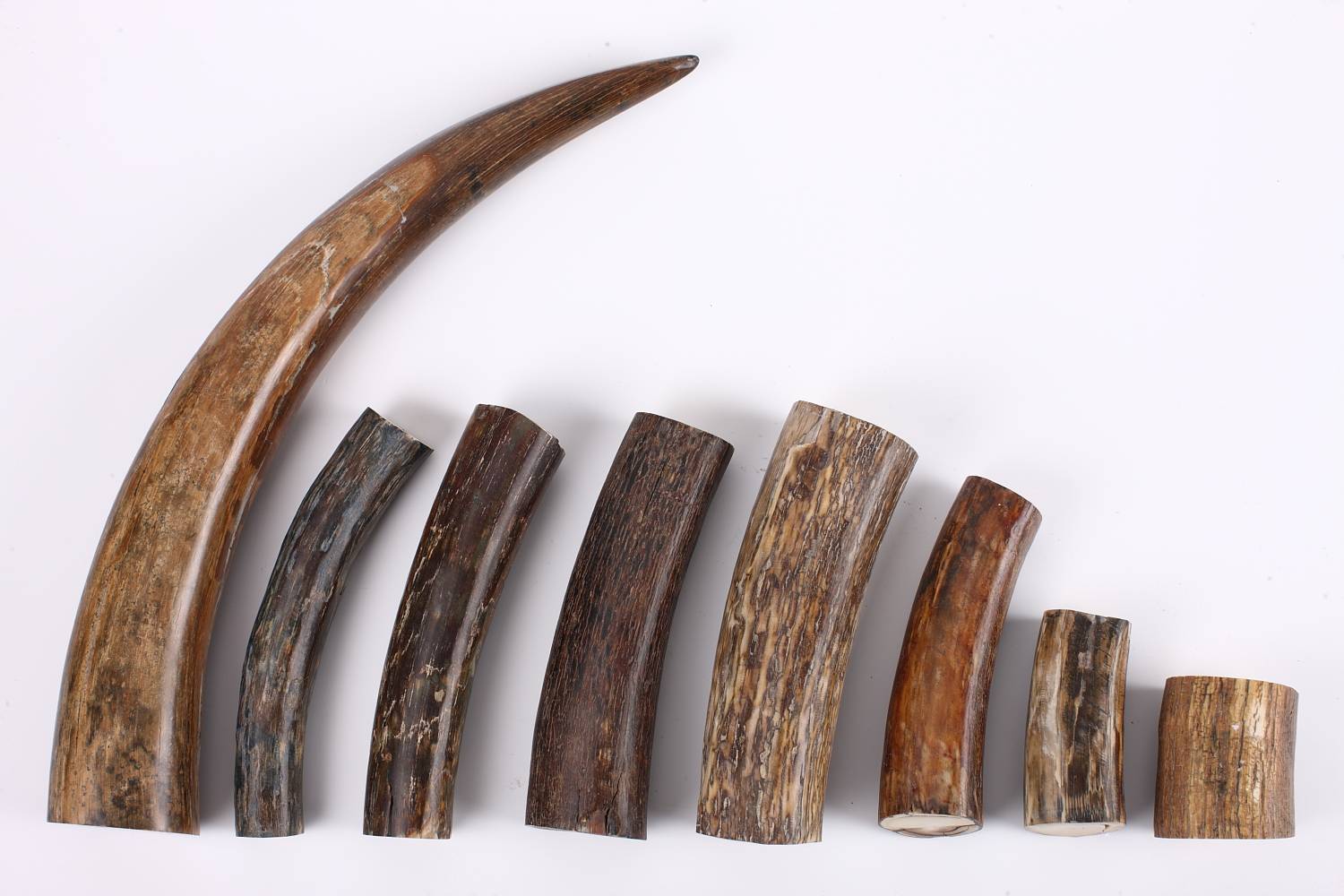
What is Mammoth Ivory?
In general terms ivory is a hard, white material from the tusks and teeth of animals. Ivory mainly consists of dentine. Irrespective of the species of origin, the chemical structure of the teeth and tusks of mammals is the same.
More specifically, mammoth ivory stems from the tusks of any species of mammoth which belongs to the extinct elephantid genus called Mammuthus. Our mammoth ivory stems from the woolly mammoth (scientific name: Mammuthus primigenius) which was the last species of the genus Mammuthus. Woolly mammoths went extinct around 4000 years ago.*
The term “mammoth ivory” encompasses what is often referred to as “mammoth bark”. Mammoth bark forms the outer layer of a mammoth tusk, while mammoth ivory is the inner core of a tusk (for analogy think trees). Mammoth bark has fascinating patina textures and unique natural colourations while mammoth ivory has a uniform texture and typical “ivory” colourations (usually white or creamy-white).
For hundreds of thousands of years, the woolly, northern or Siberian mammoths, were inhabiting the vast permafrost plains of the Arctic. Permafrost is ground that continuously remains below 0°C (32°F) for two or more years. It is formed from ice holding various types of soil, sand, and rock in combination. The extremely cold Siberian climate coupled with permafrost provide the best conditions for excellent preservation of the species’s remnants such as bones, carcasses, molars and tusks.
The excellent climatic conditions of Siberia for the preservation of mammoth ivory are not to be interpreted as a guarantee that mammoth tusks are always discovered in good condition or as whole pieces. Recovering whole mammoth tusks in top-quality condition is a rarity. Discovering a mammoth tusk pair which belonged to the same animal is literally like finding a needle in a giant haystack.
In reality, most of the time only smaller mammoth ivory pieces are recovered. These fragments are often broken, cracked, decayed and covered in layers of tough mud which has built up over thousands of years. In addition, these mammoth ivory pieces (including bark or tusk fragments) are almost always soaked with moisture on the inside. This requires a delicate drying procedure which lasts for many months (often years) under controlled climatic conditions.
If you have any further questions or require further explanations, please email us: info@arcticantiques.com
Bibliography:
"Identification Guide for Ivory and Ivory Substitutes" (PDF). Convention on International Trade in Endangered Species of Wild Fauna and Flora (CITES). Retrieved 30 April 2013.
Lister, A. M.; Sher, A. V.; Van Essen, H.; Wei, G. (2005). "The pattern and process of mammoth evolution in Eurasia". Quaternary International. 126–128: 49–64.
Sloane, H. (1727–1728). "An Account of Elephants Teeth and Bones Found under Ground". Philosophical Transactions. 35 (399–406): 457–471.
Gross, L. (2006). "Reading the Evolutionary History of the Woolly Mammoth in Its Mitochondrial Genome". PLOS Biology. 4 (3): e74.
Lister, A. M.; Sher, A. V. (13 November 2015). "Evolution and dispersal of mammoths across the Northern Hemisphere". Science. 350 (6262): 805–809.
The Academy of Natural Sciences (2007). "Woolly Mammoth (Mammuthus primigenius)". The Academy of Natural Sciences. Archived from the original on 27 September 2007. Retrieved 29 September 2007.
Cuvier, G. (1796). "Mémoire sur les épèces d'elephans tant vivantes que fossils, lu à la séance publique de l'Institut National le 15 germinal, an IV". Magasin Encyclopédique, 2e Anée: 440–445.
Reich, M.; Gehler, A.; Mohl, D.; van der Plicht, H.; Lister, A. M. (2007). "The rediscovery of type material of Mammuthus primigenius (Mammalia: Proboscidea)". International Mammoth Conference IV (Poster): 295.
Maglio, V. J. (1973). "Origin and evolution of the Elephantidae". Transactions of the American Philosophical Society. 63 (3): 1–149.
Reich, M.; Gehler, A. (2008). "Giants' Bones and Unicorn Horns Ice Age Elephants Offer 21st Century Insights". Collections – Wisdom, Insight, Innovation. 8: 44–50.
Kurten, B.; Anderson, E. (1980). Pleistocene Mammals of North America. New York: Columbia University Press. pp. 348–354.
Jacqueline Foster, Emma McClarkin, John Flack (18 July 2018). "Foster, McClarkin, Flack: "4 things we've done to improve animal welfare"". Conservatives in the European Parliament.
Boeskorov, G.; Tikhonov, A.; Shchelchkova, M.; Ballard, J. P.; Mol, D. (2020). "Big tuskers: Maximum sizes of tusks in woolly mammoths - Mammuthus primigenius (Blumenbach) - from East Siberia". Quaternary International. 537: 88–96.
Espinoza, E. O.; M. J. Mann (1991). Identification guide for ivory and ivory substitutes. Baltimore: World Wildlife Fund and Conservation Foundation.